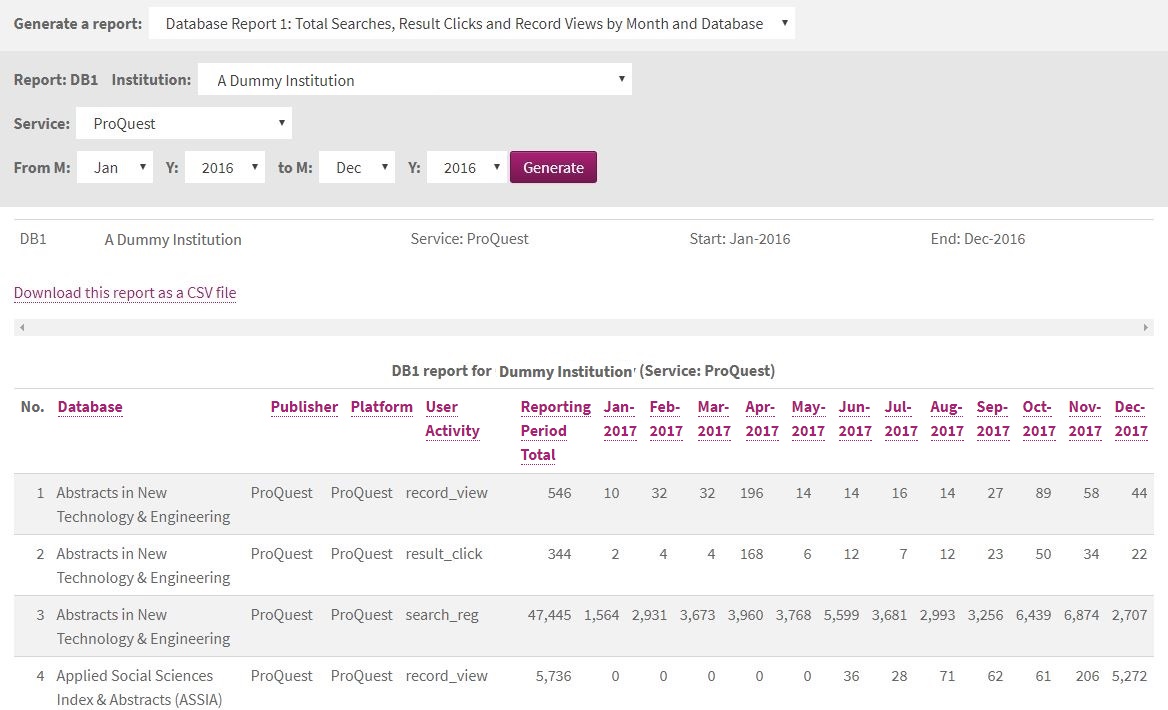DB1 report
What it tells you
The DB1 shows four types of activity: regular searches, federated/automated searches, record views and result clicks. This is displayed by month and for each database on the platform. The DB1 will only show activity for databases for which there has been activity in the selected period, in other words it does not include nil use.
How to run the report
- Log in to the portal and go to Books and other (R4)
- Select "Database Report 1: Total Searches, Result Clicks and Record Views by Month and Database"
- Select a Service
- Select a date range by month and year
- Click Generate
How to interpret the data
The DB1 provides four metrics and these need to be viewed independently to assess the value of a database. When interpreting the data it is important to consider how users are interacting with the database on the platform and external to the platform to understand how the figures relate to usage.
Regular Searches (search_reg) counts the number of searches initiated by the user where they have selected individual databases or all databases. If they select all databases in their search this will be counted as one search per database.
Federated or automated searches (search_fed) are where the user is not responsible for selecting which databases are being searched. These searches may result from federated search programme, discovery layer or similar technology where multiple databases are searched simultaneously with a single query from the user interface.
Result Clicks (result_click) shows the number of interactions performed by the user when viewing search results for that database and may include viewing the more detailed record, viewing the full-text or clicking on a link resolver.
Record Views (record_view) counts views of the detailed metadata or full database record. This view can come from a set of search results, from browsing the database, or from a click on another database record.
This means that a Result Click may also be counted as a Record View, but a Record View does not need to come from a Result Click. For example, a higher count for record views than result clicks would likely indicate more search and discovery is occurring outside the database.
Further information and examples on understanding Result Clicks, Record Views and searches can be found on the COUNTER website: https://www.projectcounter.org/quick-guideresult-clicks-record-views/
Top tips for using this report
- Consider how your users access content on the platform
- For full-text databases, view alongside the JR1 and BR1/2 in order to assess the full value
- Sort by total to view the most and least used databases
- Sort by user activity to compare different types of usage activity across databases
- Download the CSV and carry out further analysis

